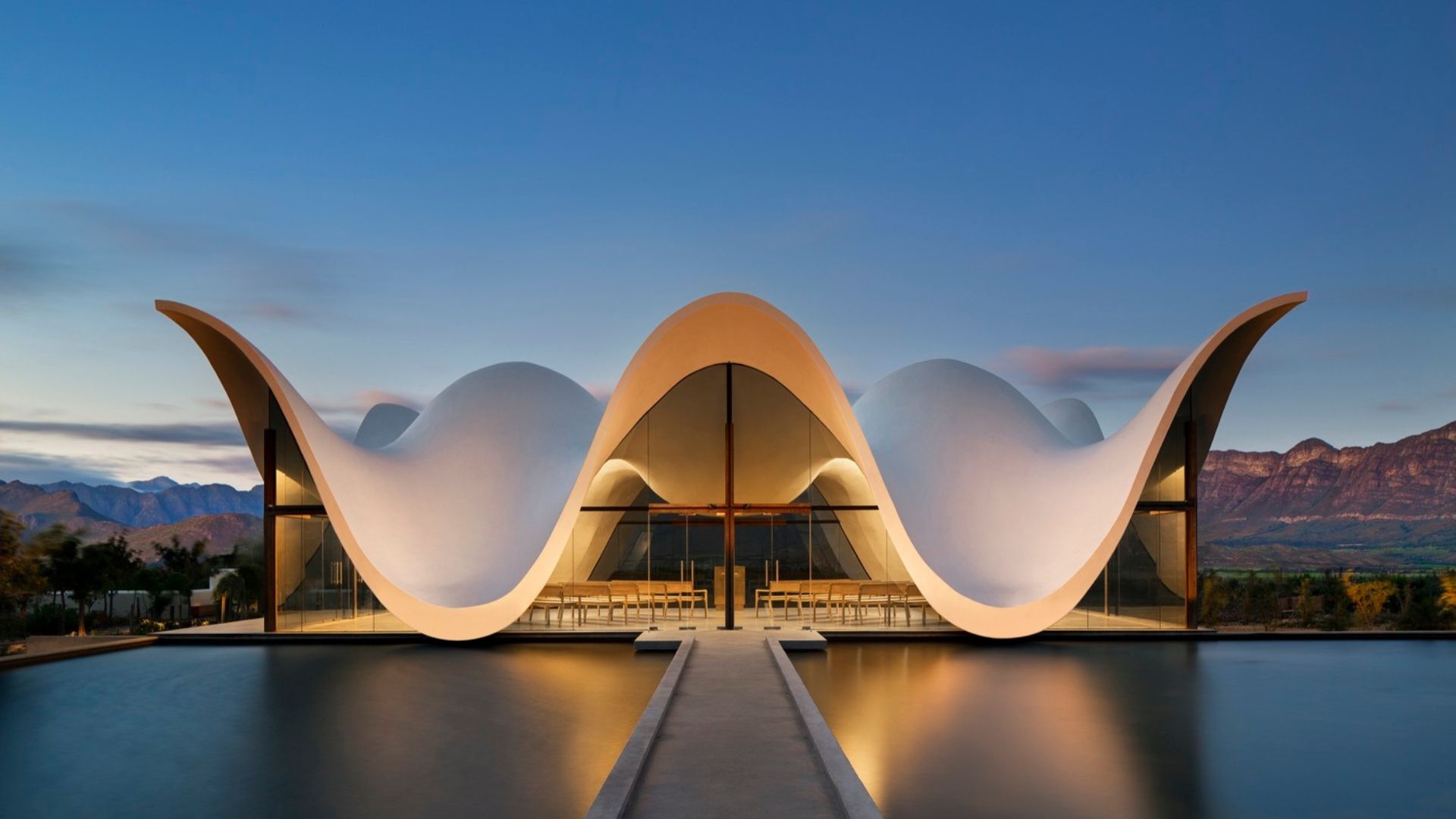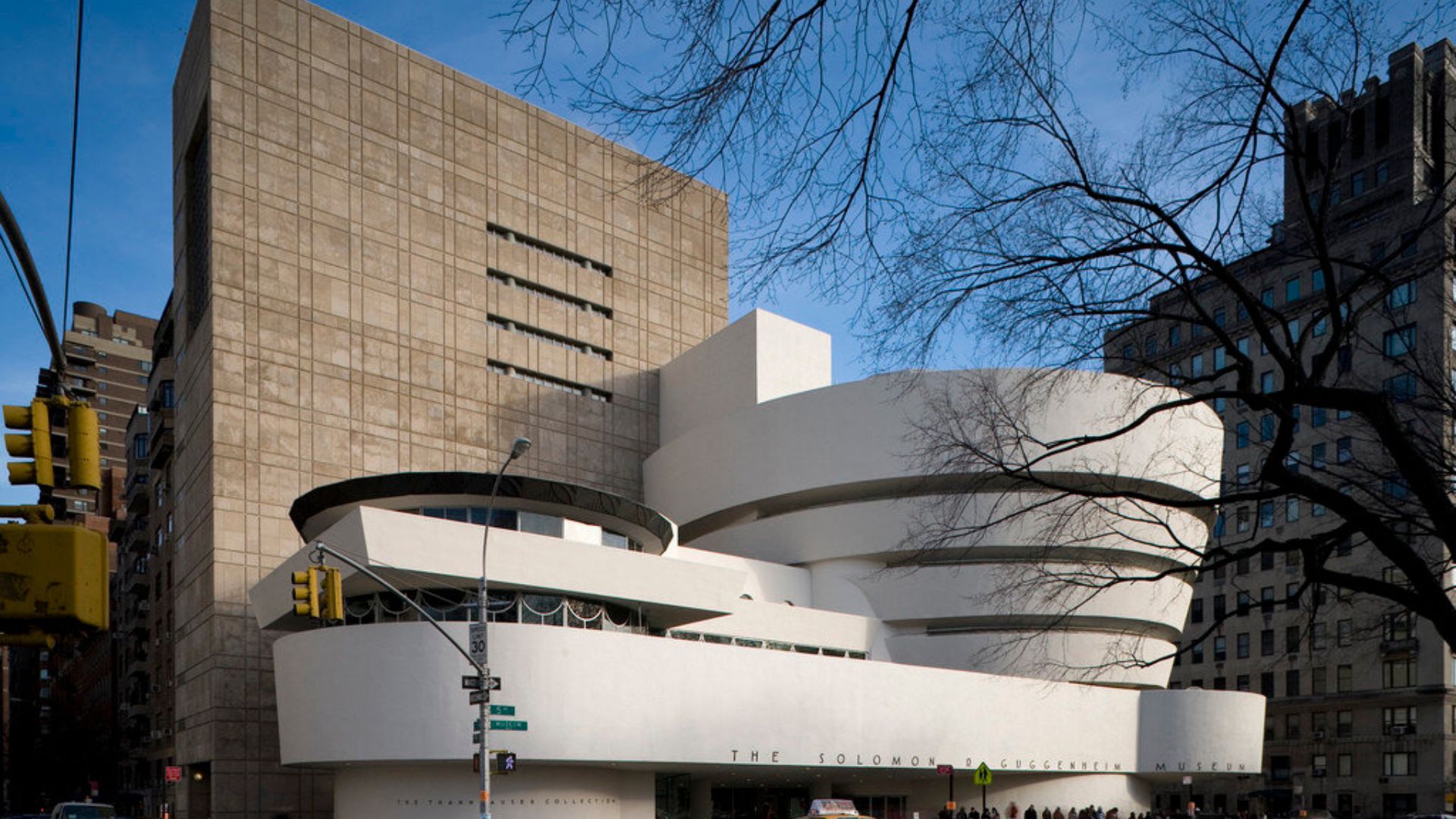Modern architecture, a movement that emerged in the early 20th century, revolutionized the way we design and build. Modern architecture has transformed city skylines and captured the imagination of people worldwide with its bold forms and innovative designs. Additionally, it broke away from traditional styles, embracing clean lines, functionality, and a focus on innovative materials and techniques. The result? Breathtaking structures that continue to inspire architects and captivate visitors today. Let’s embark on a journey and explore 10 iconic buildings that embody the essence of modern architecture:

1. Barcelona Pavilion (Barcelona, Spain)
To begin with, this masterpiece by Ludwig Mies van der Rohe is a testament to simplicity and elegance. Moreover, featuring open floor plans, polished chrome surfaces, and walls of translucent glass, the Barcelona Pavilion embodies the concept of “less is more.”
2. Guggenheim Museum (New York City, USA)
Additionally, Frank Lloyd Wright’s iconic Guggenheim Museum is a true head-turner. Its swirling, white concrete ramps resemble a giant seashell, creating a unique and unforgettable experience for art enthusiasts as they navigate the exhibits.
3. Fallingwater (Mill Run, Pennsylvania, USA)
Another Frank Lloyd Wright creation, Fallingwater seamlessly integrates with its natural surroundings. Furthermore, the house appears to “fall” over a waterfall, showcasing Wright’s philosophy of harmonious connection between architecture and nature.
4. Sydney Opera House (Sydney, Australia)
This instantly recognizable landmark, designed by Jørn Utzon, resembles giant white sails billowing in the wind. The Sydney Opera House’s unique, shell-like structures are not just visually striking but also offer exceptional acoustics for performances.
5. Bauhaus Dessau (Dessau, Germany)
A UNESCO World Heritage Site, the Bauhaus Dessau building served as a school of art, design, and architecture in the early 20th century. Therefore, the building itself exemplifies the Bauhaus principles – functional design, geometric shapes, and the integration of various artistic disciplines.
6. Glass House (New Canaan, Connecticut, USA)
Designed by Philip Johnson, the Glass House is a minimalist marvel. Walls of glass create a seamless connection between the interior and exterior, blurring the lines between nature and living space.
7. Villa Savoye (Poissy, France)
A pioneer of modern architecture, Le Corbusier’s Villa Savoye embodies his “Five Points of Architecture” – pilotis (raised columns), free plan, free facade, horizontal windows, and rooftop garden. Furthermore, this innovative design revolutionized residential architecture.
8. The Empire State Building (New York City, USA)
Additionally, a towering symbol of New York City, the Empire State Building is a classic example of Art Deco architecture, a sub-style of modernism. Its sleek lines, geometric details, and use of chrome and aluminium create a sense of grandeur and modernity.
9. The National Congress Center (Brasília, Brazil)
Designed by Oscar Niemeyer, the National Congress Center in Brasília is a prime example of Brazilian modernism. Its bold curves, white concrete structures, and reflecting pools create a visually stunning and futuristic impression.
10. The Jin Mao Tower (Shanghai, China)
Finally, this skyscraper in Shanghai represents the modern fusion of Eastern and Western influences. Its design incorporates traditional Chinese architectural elements like pagoda-like tiers, while its overall structure reflects modern principles of functionality and height.
Conclusion
In conclusion, these 10 iconic buildings represent just a glimpse into the vast and impressive world of modern architecture. Additionally, from the clean lines of the Barcelona Pavilion to the awe-inspiring scale of the Empire State Building, each structure pushes the boundaries of design and inspires us to think differently about the spaces we inhabit. Furthermore, each structure tells a unique story of innovation, creativity, and cultural significance, shaping the cities and landscapes they inhabit. As we marvel at their awe-inspiring designs, we are reminded of the boundless possibilities of architecture to inspire, uplift, and define the spirit of our times. So, the next time you travel or explore your city, take a moment to appreciate the modern architectural gems that surround you. These structures are not just buildings; they are testaments to human creativity and innovation.


